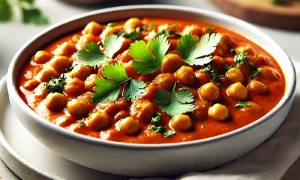Tempeh vs. Tofu

Both tempeh and tofu are popular meat alternatives that are often used in vegetarian and vegan diets. While they may seem similar, there are some key differences between the two.
Tempeh is made from whole soybeans that are cooked, fermented, and molded into a block. It has a nutty flavor and a firm, dense texture. On the other hand, tofu is made from soy milk that is coagulated and pressed into a block. Tofu has a more neutral flavor and a softer texture than tempeh. The best option for your dish depends on your nutritional needs and personal preferences.
Tempeh vs. Tofu: What’s the Difference?
If you’re looking for a plant-based protein source, you’ve probably come across tempeh and tofu.
Production Process
Tempeh and tofu are both made from soybeans, but the way they are processed and fermented is different.
Tempeh is made by soaking and cooking soybeans, then adding the Rhizopus oligosporus culture and letting it ferment for 24-48 hours. The fermentation process results in a nutty, earthy flavor and a firm texture.
Tofu, on the other hand, is made by heating soy milk and adding a coagulant, such as calcium sulfate or nigari. The curds are then pressed into blocks, resulting in a softer texture.
Nutrition
When it comes to nutrition, tempeh and tofu have some differences. Both are good source of protein and many other key nutrients.
A unique advantage of tempeh is that it also contains probiotics, which can be beneficial for gut health.
Tofu, on the other hand, is lower in calories and fat than tempeh, but it is also lower in other nutrients such as iron and potassium. However, tofu is a good source of calcium, which is important for bone health.
Here’s a quick comparison of the nutrition of tempeh vs. tofu:
| Nutrient | Tempeh (100g) | Tofu (100g) |
|---|---|---|
| Protein | 19g | 8g |
| Fat | 11g | 4g |
| Fiber | 8g | 1g |
| Iron | 2.7mg | 1.5mg |
| Potassium | 390mg | 121mg |
| Calcium | 111mg | 350mg |
Tempeh
What is Tempeh?
Tempeh is a plant-based protein source made from fermented soybeans. It originated in Indonesia and has become increasingly popular in recent years as a meat alternative. During the fermentation process, the soybeans are bound together into a solid white block, which can be sliced and used in various dishes.
Flavor and Texture
Tempeh has a nutty flavor and a chewy texture, making it a versatile ingredient in different dishes. It is firmer and denser than tofu, making it a great meat substitute in soups, stir-fries, and sandwiches. Its earthy taste pairs well with different spices, and it can be marinated to enhance its flavor.
Health Benefits
Tempeh is a nutritious food that provides a good amount of protein, fiber, and nutrients like iron, calcium, and potassium. It is also a good source of magnesium and vitamins. Compared to tofu, tempeh contains more fiber and protein per serving, making it a healthier option for those looking to increase their intake of plant-based proteins.
Cooking with Tempeh
Tempeh is a versatile ingredient that can be cooked in various ways. It can be baked, fried, sautéed, or added to soups and stews. When cooking with tempeh, it is important to note that it needs to be cooked thoroughly to remove any bitterness. It can also be crumbled and used as a meat substitute in tacos or salads.
Where Can You Get Tempeh?
Tempeh can be found in most grocery stores, usually in the refrigerated section. It comes in solid white blocks and can be stored in the fridge for up to a week. It can also be frozen for later use.
Overall, tempeh is a healthy and delicious meat alternative that can be used in various dishes. Its firmness and texture make it a great addition to stir-fries, salads, and sandwiches. It is also a great source of protein and fiber, making it a healthier option than other meat alternatives like seitan or processed soy products.
Veggums Recipes with Tempeh
Tofu
What is Tofu?
Tofu is a block of soybean curd that is made by coagulating soy milk and pressing the resulting curds into a solid block. It is a plant-based protein that is often used as a meat substitute in vegetarian and vegan diets. Tofu comes in different textures, including firm, soft, and silken, and can be used in a variety of dishes.
Flavor and Texture
Tofu has a mild taste and takes on the flavor of the ingredients it is cooked with. Its texture can range from soft and silky to firm and chewy, depending on the type of tofu used. Firm tofu is best for stir-fries and grilling, while silken tofu is great for sauces, smoothies, and desserts.
Health Benefits
Tofu is a healthy plant-based protein that is low in calories and fat, and high in protein, fiber, and nutrients like iron and calcium. It is also a good source of magnesium, which is important for bone health. Tofu is a great addition to a vegetarian or vegan diet because it provides essential nutrients that are often lacking in plant-based diets.
Cooking with Tofu
Tofu can be cooked in a variety of ways, including frying, baking, grilling, and sautéing. To enhance its flavor, tofu can be marinated in sauces or spices before cooking. It is also a great addition to salads, stir-fries, and rice dishes. Tofu can be used in place of meat in many recipes, making it a versatile ingredient in plant-based cooking.
Where Can You Get Tofu?
Tofu can also be found in most grocery stores, usually in the refrigerated health foods section. You can find a variety of levels of firmness.
We highly recommend also getting a tofu press. Especially when making things like scrambles and stir fries, pressing your tofu can make a world of difference.
Tofu is a healthy and versatile plant-based protein that can be used in a variety of dishes. It comes in different textures and can be cooked in many ways. Incorporating tofu into your diet can provide many health benefits, including essential nutrients and protein.










